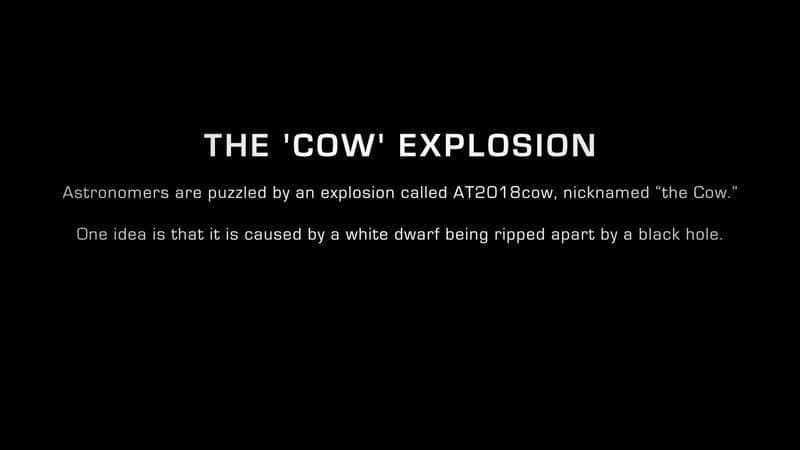Mysterious %E2%80%98Cow%E2%80%99 Blast Studied with NASA Telescopes

A brief and unusual flash spotted in the night sky on June 16, 2018, puzzled astronomers and astrophysicists across the globe. The event, called AT2018cow and nicknamed “the Cow” after the coincidental last letters of its official designation, is unlike any celestial outburst ever seen before, prompting multiple theories about its source. Over three days, the Cow produced a sudden explosion of light at least 10 times brighter than a typical supernova, and then it faded over the next few months. This unusual event occurred near a star-forming galaxy known as CGCG 137-068, located about 200 million light-years away in the constellation Hercules. Using data from multiple NASA missions, including the Neil Gehrels Swift Observatory and the Nuclear Spectroscopic Telescope Array (NuSTAR) and ESA’s (the European Space Agency's) XMM-Newton and INTEGRAL missions, two groups have provided possible explanations for the Cow’s origins. One group argues that the Cow is a monster black hole shredding a passing star. The second group hypothesizes that it is a supernova — a stellar explosion — that gave birth to a black hole or a neutron star. Whatever its source, the Cow represents a stellar death scenario not previously seen.